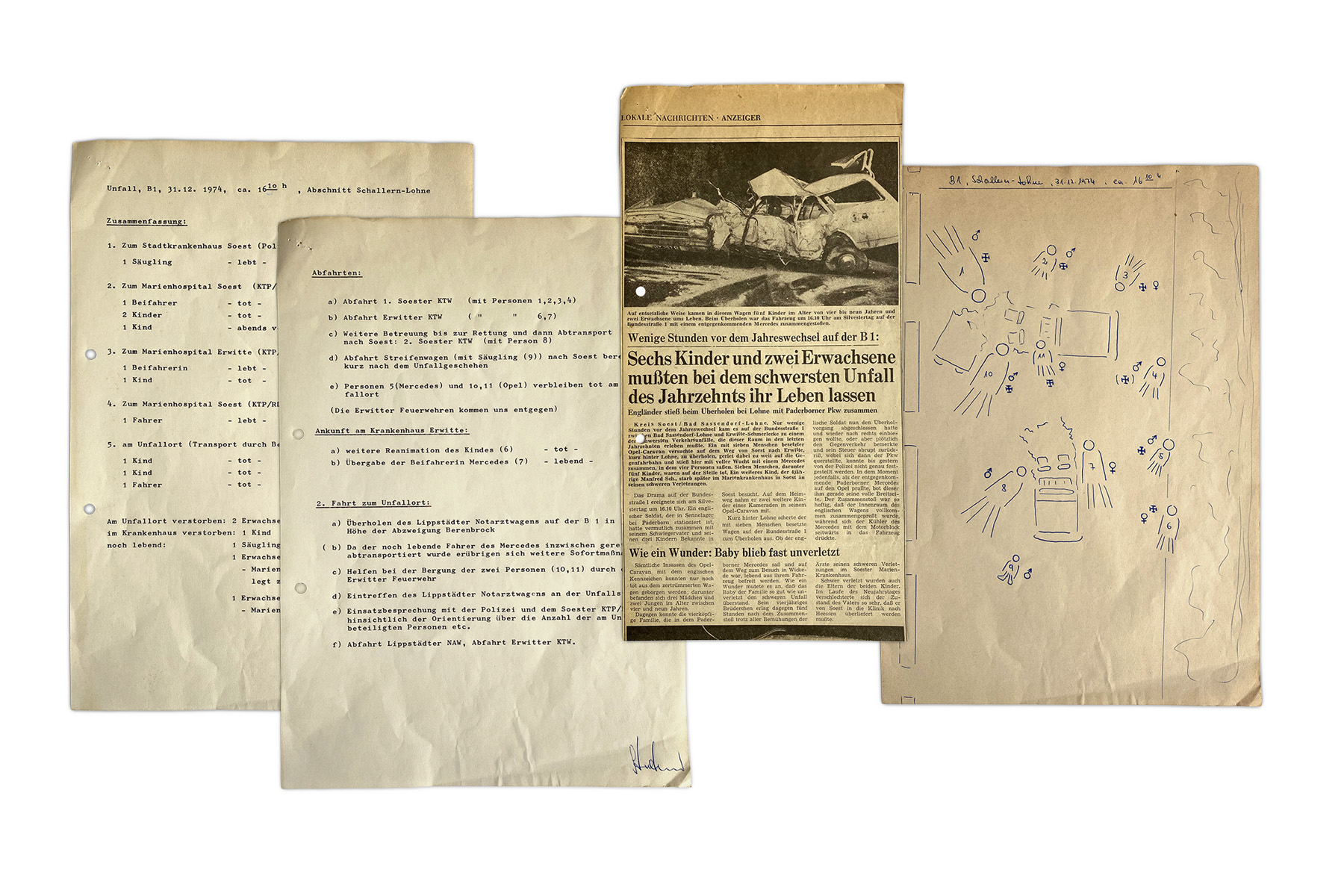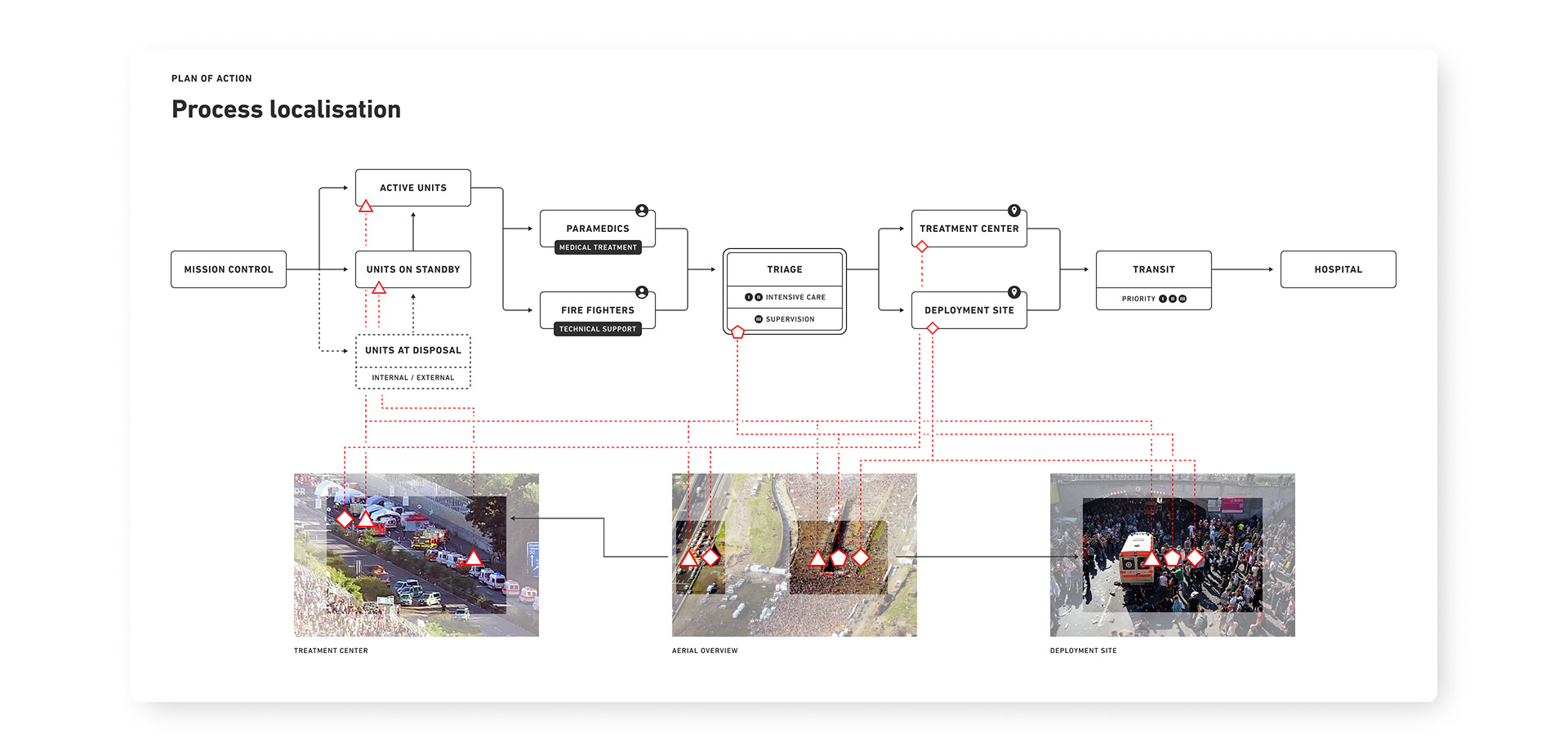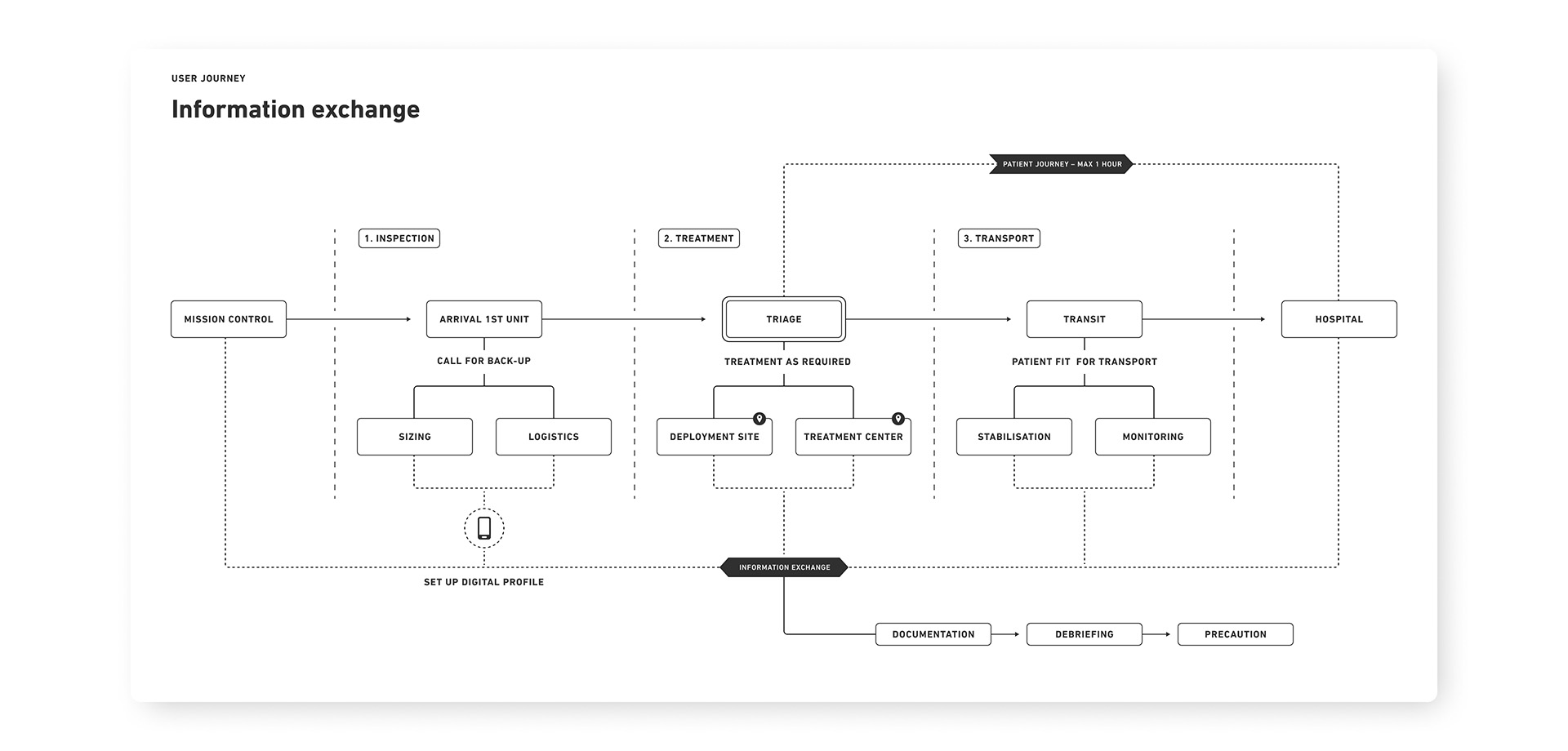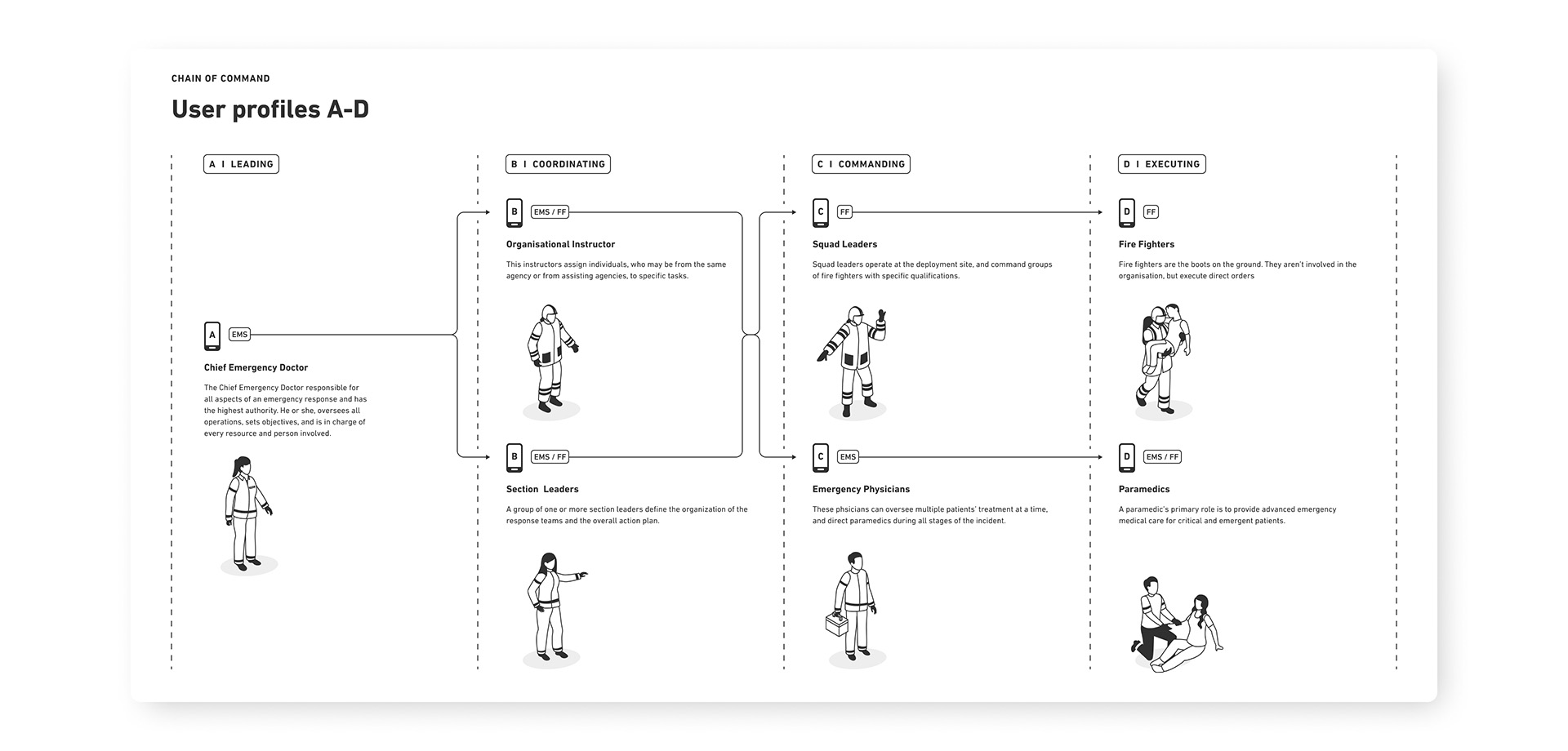Florian Intercom System
During a Mass Casualty Incident, an array of protocols is activated as the exchange of information becomes essential for people’s health.
However, incidents such as the Love Parade Stampede, or the Grenfell Tower Fire reveal that Emergency Medical Services lack behind today’s technological standard.
Florian Intercom System bundles the flow of information, by digitising the triage, and coordinating multiple relief forces.

At the starting point of this app’s UI design stands the documentation on a 1974 car accident, containing a news article, a schematic drawing, and a medical report.
Whereas, the news articles renders a tragedy, that left six children and two adults dead, report and drawing assemble a sober testimony through clear and medical observation. This analytical precision is key to the app’s usability.

To understand the dire technological gap in the emergency medical services’ communication systems today, the Duisburg Love Parade Stampede serves as a case study.
The stampede left 21 people dead from suffocation, and 500 more injured, as people tried entering the festival through a narrow tunnel.
Faulty communication led to a slow and deficient emergency response, demonstrating the need for a digital product, that channels patients‘ registering and monitoring in real-time.

At the core of every emergency response sits the Triage, the allocation of treatment according to a system of priorities. This app’s primary goal is creating a digital representation of the cause of events, and documenting all processes during triage.


Through investigating the course of events, the relief forces’ plan of action is localised, and their procedures visualised. As the users’ environment, and the scope of application become apparent – design and functionality are developed accordingly.

Users are physicians, paramedics, or firefighters. Their patients’ treatment from triage to hospitalisation renders the user journey.
Besides tasks evolving around the triage, Florian Intercom System can also help with communication between users, and provides data to train relief forces for future incidents.




